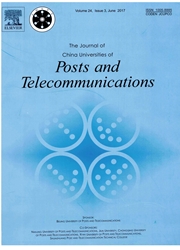

 中文摘要:
中文摘要:
今天的因特网从先进研究工程机构网络(ARPANET ) 发源并且在过去的年期间常常演变。与因特网上的增长补丁,然而,当前的网络体系结构面对太困难,不能解决的许多问题。根据对重新设计因特网的最近的兴趣,核心网络和顾客边网络的分离,和标识符和定位器的分离在科学家之中收到宽一致。我们跟随这条指令并且在这篇论文与多样化的顾客边存取(HNDCE ) 建议一个新层次网络。我们使用实现一个真核心 / 边和定位器 / 标识符裂口的切换的地址,路由地址和标识符。在核心网络,层次切换地址与拓扑学使路由被切换代替了的树结合了。Viliant 平衡负担(VLB ) 结构这里被使用补偿拓扑学的可靠性和可伸缩性。在顾客边网络,定位器和标识符的裂口使部署各种各样的路由计划和新服务可能。层次印射系统也被设计支持这新体系结构。
 英文摘要:
英文摘要:
The Internet today originates from the advanced research project agency network (ARPANET) and evolves constantly during the past years. However, with incremental 'patches' on the Internet, the current network architecture faces many problems which are too difficult to solve. In the light of recent interest in re-designing the Internet, the separation of core network and customer edge network, and the separation of identifier and locator receive wide consensus among scientists. We follow this direction and propose a new hierarchical network with diversified customer edge access (HNDCE) in this paper. We use switching addresses, routing addresses and identifiers to implement a true core/edge and locator/identifier split. In the core network, hierarchical switching addresses combined with tree topology makes routing replaced by switching. The Viliant load-balancing (VLB) structure is used here to compensate the topology's reliability and scalability. In the customer edge network, the split of locator and identifier makes it possible to deploy various routing schemes and new services. Hierarchical mapping system is also designed to support this new architecture.
 同期刊论文项目
同期刊论文项目
 同项目期刊论文
同项目期刊论文
 期刊信息
期刊信息
